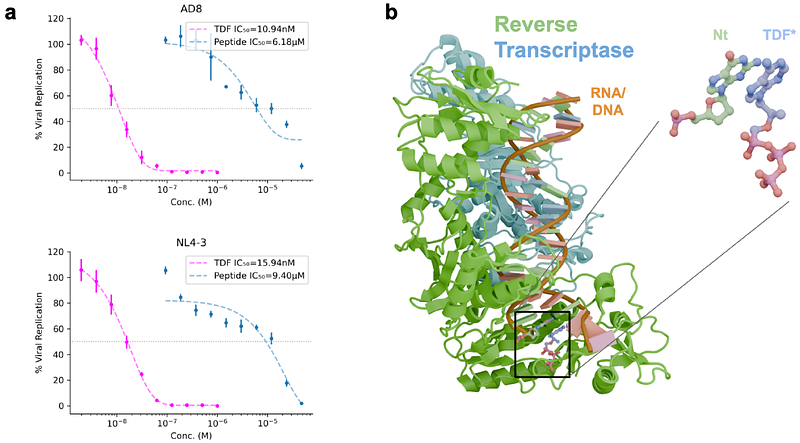Single-Shot Design of a Cyclic Peptide Inhibitor of HIV-1 Membrane Fusion with EvoBind

Single-Shot Design of a Cyclic Peptide Inhibitor of HIV-1 Membrane Fusion with EvoBind
Daumiller, D.; Giammarino, F.; Li, Q.; Sonnerborg, A.; Cena-Diez, R.; Bryant, P.
AbstractHIV evades the immune system through rapid mutation of its surface proteins, particularly the envelope glycoprotein. However, the core mechanism of viral entry, CD4 binding and co-receptor engagement remains conserved. While therapies such as Lenacapavir represent important advances, the continued emergence of resistant strains will demand new and more adaptable treatment strategies. This challenge is not unique to HIV; future pandemics will likely present similar pressures, highlighting the need for drug design methods that are not only effective but also fast and scalable. Recent advances in protein structure prediction have transformed the landscape of therapeutic design, enabling the accurate modelling of target structures from sequence alone and now facilitating the development of novel therapeutics without prior structural data. EvoBind leverages these advances to rapidly generate cyclic peptide binders in a single design round, using only the amino acid sequence of a target protein. Cyclic peptides offer several advantages over traditional linear protein molecules, including increased stability, while their small size improves oral bioavailability and enables access to challenging binding sites. Here, we demonstrate the use of EvoBind to generate cyclic peptide binders against the HIV envelope protein gp41, which is essential for viral-host membrane fusion. Cell-based assays confirm potent inhibition of two different HIV-1 strains with no detectable toxicity. The combination of artificial intelligence-guided design and streamlined experimental validation can significantly accelerate therapeutic development, reduce costs, and provide timely solutions to the challenges posed by viral evolution and emerging global health threats.